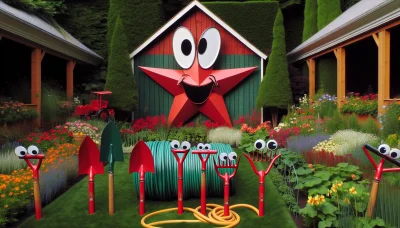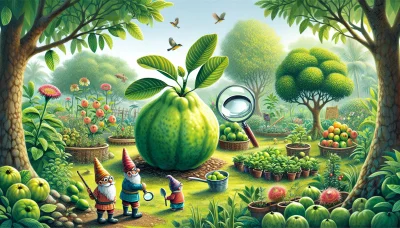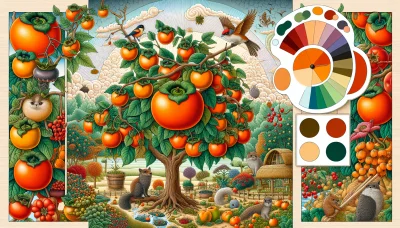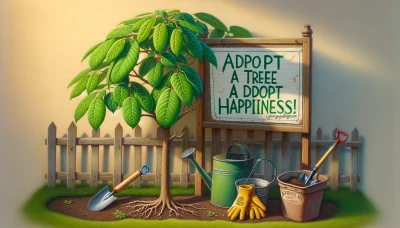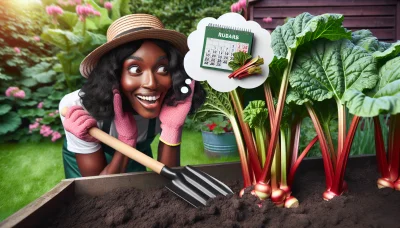Hex Signs in Gardens Quiz
Test Your Knowledge
Question of
The Enchanting World of Hex Signs in Gardens
Hex signs are a form of Pennsylvania Dutch folk art, traditionally painted on barns, that have found a special place in gardens across the globe. Originating from German settlers in the 17th and 18th centuries, these colorful, geometric symbols carry meanings and beliefs rooted in cultural heritage and spirituality. In gardens, hex signs are not only used for decoration but are also believed to promote fertility, prosperity, and protection against evil spirits. The adaptation of hex signs in garden spaces is a testament to their enduring appeal and the deep human desire to intertwine nature with symbolic, protective measures. This practice highlights the seamless blend of aesthetics, folklore, and a deep-seated respect for the land that continues to enchant and inspire gardeners and cultural enthusiasts alike.
The Symbolism Behind Garden Hex Signs
Hex signs, often seen adorning barns and gardens, carry a rich tapestry of symbolism deeply rooted in nature and the cultivation of the earth. These colorful, geometric patterns are not just decorative; they're imbued with meanings and intentions for the spaces they protect and beautify. For instance, the common rosette motif symbolizes good luck and fortune, a blessing many gardeners seek for their plots. Birds, especially the distelfink, are a frequent sight on hex signs, representing happiness, good luck, and harmony with nature – all crucial elements for a thriving garden. The oak leaf, a symbol of strength and endurance, reflects the gardener's hope for their garden to withstand the seasons. Stars, often depicted with five or six points, are believed to bring good luck and divine guidance, guiding the gardener's hand. The symbolism extends to colors as well; green for growth and fertility, blue for protection and peace, and red for passion and creativity. Together, these symbols weave a visual spell of sorts, casting intentions of prosperity, protection, and harmony over the gardens and nature spaces they oversee.
Incorporating Hex Signs into Your Garden Design
Hex signs, traditionally used in Pennsylvania Dutch culture as decorations on barns, can add a unique and meaningful touch to your garden space. When integrating hex signs into your garden, consider placing them in areas where they can be easily seen and appreciated, such as on garden sheds, fences, or mounted on poles among your plants. Choose themes that resonate with your garden's aesthetic or your personal interests. For example, hex signs featuring birds, flowers, or celestial patterns can complement a nature-inspired garden, while geometric patterns can add a modern touch. Remember to consider the color scheme of your garden when selecting hex signs, ensuring they complement rather than clash with your existing plants and decorations. By thoughtfully incorporating hex signs, you can create a garden that is not only beautiful but also rich in symbolism and personal significance.
DIY Garden Hex Signs: A Step-by-Step Guide
Materials Needed:
- Pre-cut wooden circles (your choice of size)
- Exterior grade paint in various colors
- Paintbrushes in various sizes
- Pencil and eraser
- Clear varnish for outdoor protection
- String or wire for hanging
- Drill (for making a hole for hanging)
Steps:
- Start by drilling a small hole at the top of your wooden circle. This will be used for hanging your hex sign once it is completed.
- Sketch your design lightly onto the wooden circle with a pencil. You can find traditional hex sign motifs online or come up with your own design.
- Begin painting your design. Use the smaller brushes for detail work and the larger brushes to fill in larger areas of color. Let each color dry before adding adjacent colors to avoid smudging.
- Once your design is fully painted and dry, apply a coat of clear varnish. This will protect your hex sign from the elements and ensure it lasts for years in your garden.
- After the varnish has dried completely, thread a piece of string or wire through the hole you drilled at the beginning. Make sure it's secure for hanging.
- Choose a spot in your garden where your hex sign will be visible and enjoy your handiwork!
Gallery of Garden Hex Signs
Welcome to our curated selection of images showcasing the stunning variety and creativity of hex signs in garden settings. Each piece is a testament to the rich tradition and personal expression that these symbols can bring to outdoor spaces. From intricate patterns that echo the natural world to bold designs that stand out against the greenery, this gallery celebrates the beauty and diversity of hex signs as a unique garden feature.
Caring for Your Garden Hex Signs
To ensure your garden hex signs retain their vibrant colors and intricate designs for years to come, it's essential to prioritize their maintenance and preservation, especially since they are exposed to the elements outdoors. Begin by choosing hex signs made from durable materials like weather-resistant wood, metal, or high-grade plastics. These materials can withstand various weather conditions, from intense sun exposure to heavy rain and snow. Applying a protective sealant is a crucial step in the care process. Look for a UV-resistant and waterproof sealant to apply to your hex signs. This layer will help prevent fading, cracking, and water damage. Reapply the sealant annually or as needed based on the level of exposure and wear. Additionally, consider the location where you place your hex signs. Try to install them in areas that receive some shade during the day to minimize direct sun damage. Regularly cleaning your hex signs with a soft, damp cloth can also help maintain their appearance, removing any dirt or debris that accumulates over time. By following these care tips, you can enjoy the beauty and charm of your garden hex signs for many seasons to come.


